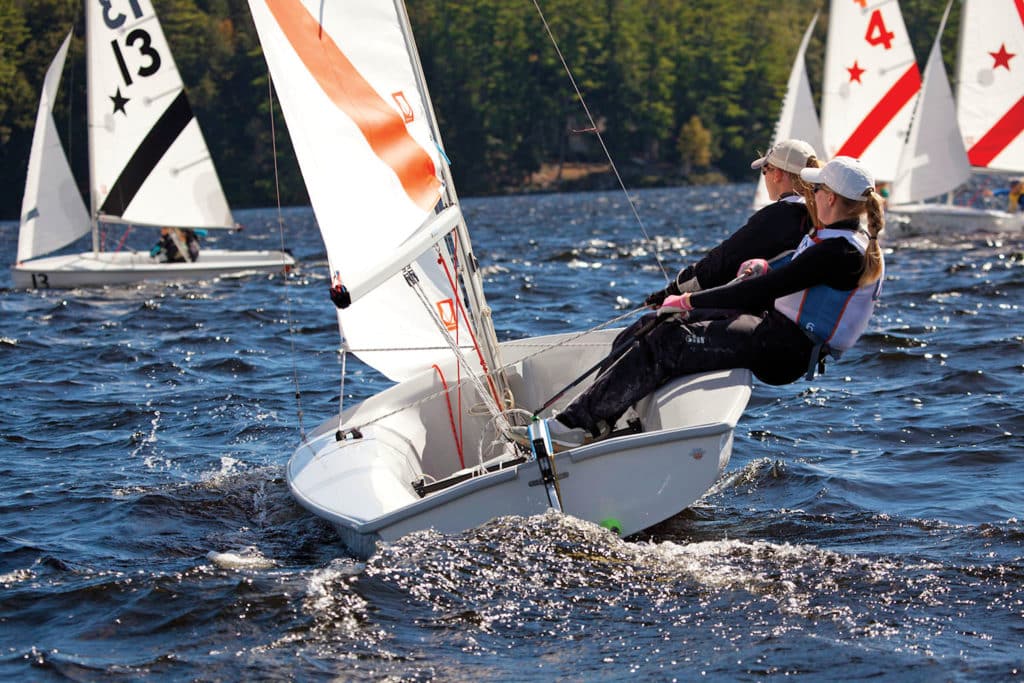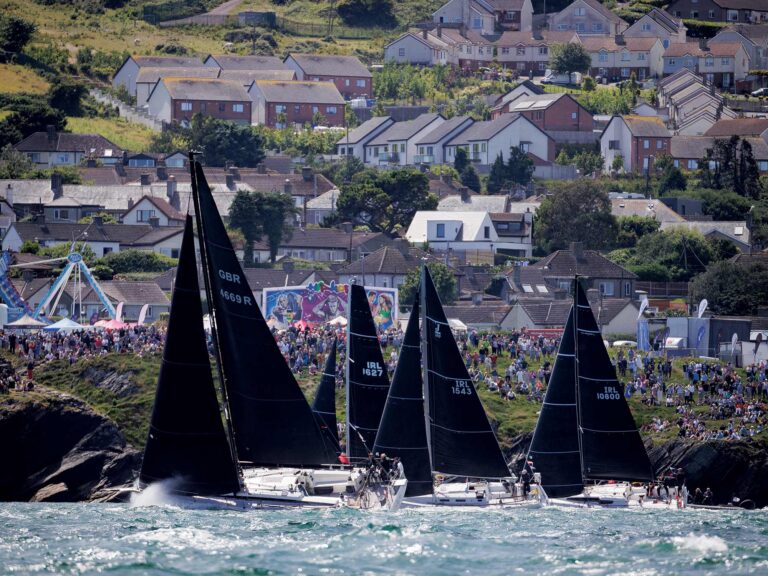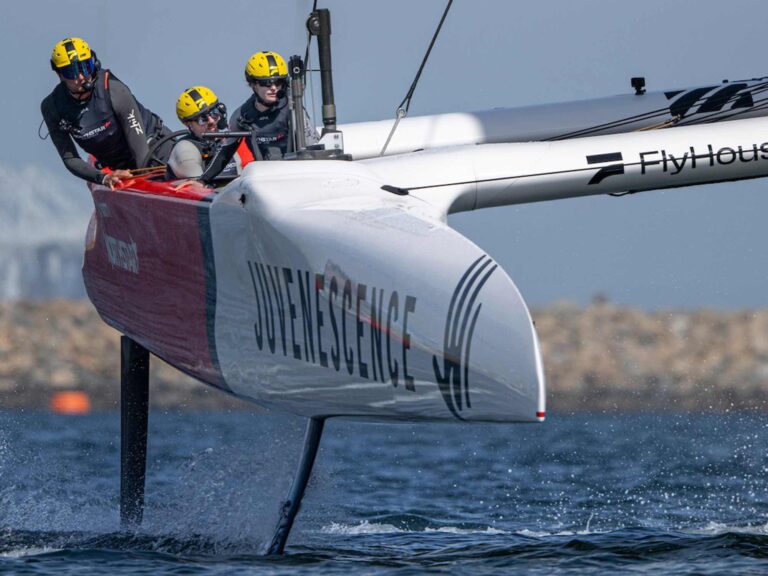The effort to modernize the C420, the workhorse of college sailing, has been years in the making, with the ultimate goal being a boat that’s lighter, stronger, and faster. LaserPerformance’s Z420, built to these attributes, will be at 12 colleges by year’s end, and sailors and coaches that have tested the prototype and final model conclude the boat is more responsive. As a result, experienced college sailors, and transitioning high school sailors, will be making adjustments to proven techniques and habits.
“Sailors are finding their tacks are faster,” says Adam Werblow, LaserPerformance’s director of institutional sales. “Their weight is farther forward, and the boat is more responsive to sail trim and weight adjustments.”
The hull shape of the Z420 is exactly the same as the C420, but it’s a significantly lighter and more durable boat because of Soric core material, buoyancy tanks in the bow, and a structural spine that runs nearly the length of the hull. Because of its lighter weight, the Z420 accelerates faster out of basic boathandling maneuvers and can plane more easily in the right conditions. “There is more precision where boathandling is concerned,” says Dartmouth co-head coach, Justin Assad. “The C420 handled like a Mack truck. These boats are snappier.”
Zach Leonard, Yale University’s head coach, points out that weight placement shifts forward because the boat floats higher in the water: “Since the bow is lighter, it allows the crew to sit farther forward and keep the knuckle in the water.”
The lighter weight of the Z420 also allows sailors to use a “low mode” when sailing upwind to induce planing. Shifting into this low mode simply requires a slight ease of the jib sheet and a hard hike to the flatten boat. This mode is effective in shifty or especially breezy conditions, and can provide an extra boost of acceleration in a good lane off the starting line.
The counter to this low mode, however, is a surprisingly higher sheeting angle. The jib leads are positioned farther inboard than a C420, which makes for a flatter jib and the ability to point much higher. “We found in light breeze, they will point exactly the same as an FJ,” says Werblow.
At the 2013 Mrs. Hurst Bowl, where the boats were first used in competition, Assad noticed that sailors were pointing too high, however, and says sailors more familiar with the C420 will have to “recalibrate their feel to what they were doing before college sailing.” And for those who’ve only ever sailed in college and high school, this will mean an even bigger adjustment.
Across the board, teams are using less weather sheet than a C420, but there’s still a learning process here. While practicing straight-line boatspeed, Assad says his team is experimenting with the amount of windward sheet the crews are using. New sail designs are also being tested to compensate for the change in jib lead placement.
While competitors are not allowed to individually set mast-rake adjustment, Sta-Master turnbuckles still offer the opportunity for sailors to better understand mast rake. “It will provide a little more of a dynamic game,” says Leonard. “The potential is now there for the sailors to learn a lot more from sailing these high-performance boats.”
At the Mrs. Hurst Bowl, Assad experimented with rake. “The boats sailed better,” he says. “Rake adjustment seems to be the best depowering control.”
Werblow reports that all colleges that have ordered Z420s will have Sta-Masters. “It brings in the fun parts of Lark sailing, and fits the bill in a much more realistic sense,” he says. “It’s a bit of a hassle to change everything [for competition], but the Sta-Masters will make rake adjustment a more viable option as far as powering and depowering are concerned.”
Another area of development involves the vang, which can be kept forward on the mast for the crew or led aft to the traveler bar for the skipper. St. Mary’s sailor John Wallace says, “As a skipper, I like having control of the vang both upwind and downwind … similar to a Laser vang control mindset.”
There will be much to learn and discover as sailors spend more time with the boat, but these experiences will be valuable for sailors after they graduate, too, says Leonard. “We realized [the C420s] are training sailors for keelboat sailing,” he says. “The Z420 should better prepare sailors for the world of high-performance boats.”
New for the Z420
Colleges can keep the vang forward on the mast for the crew to adjust or lead it aft to the traveler bar.
A forward bulkhead makes for a safer boat, as water can no longer rush into the bow and cause the boat to submarine.
Jib leads are placed farther inboard than on a C420. As a result, teams are using less windward sheet and finding that they can point higher with the flatter jib.
The angular geometry of the Z420 hull should eliminate the possibility of pressure cracks on the hull. Areas prone to impact pressure are infused with foam for strength.
The Z420 is lighter and stronger than the C420 because of Soric core material and an infused molding process. The hull shape is the same as the C420, but the Z420 is made up of only three molded components (hull, deck, and mast partners) to the C420’s six.
This article first appeared in the May/June 2014 issue of Sailing World.










